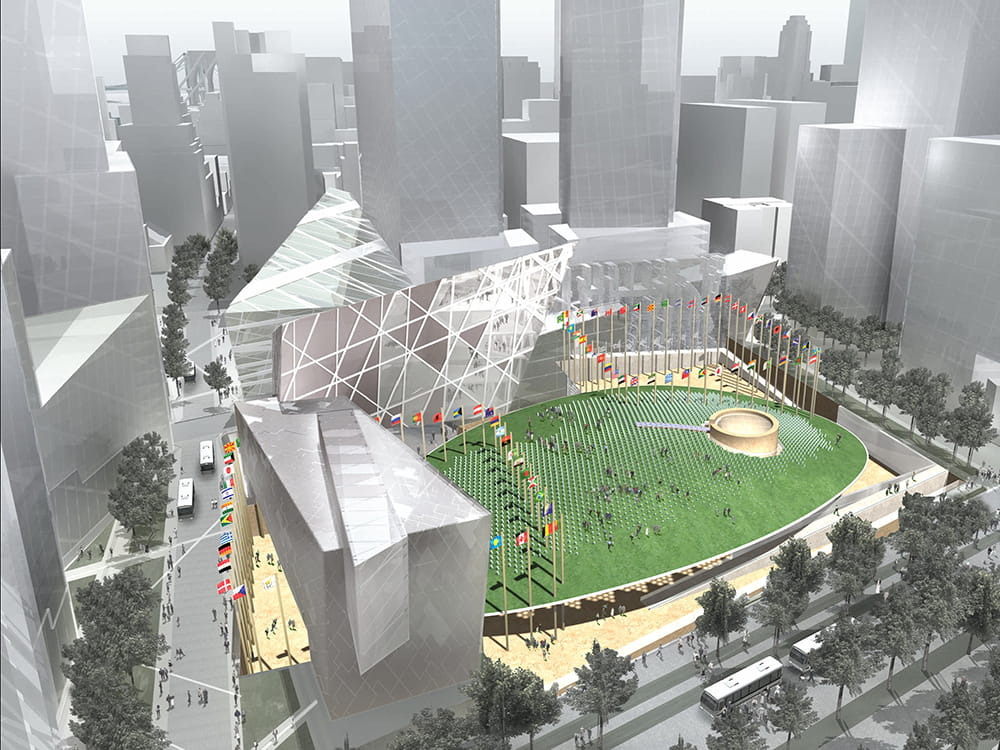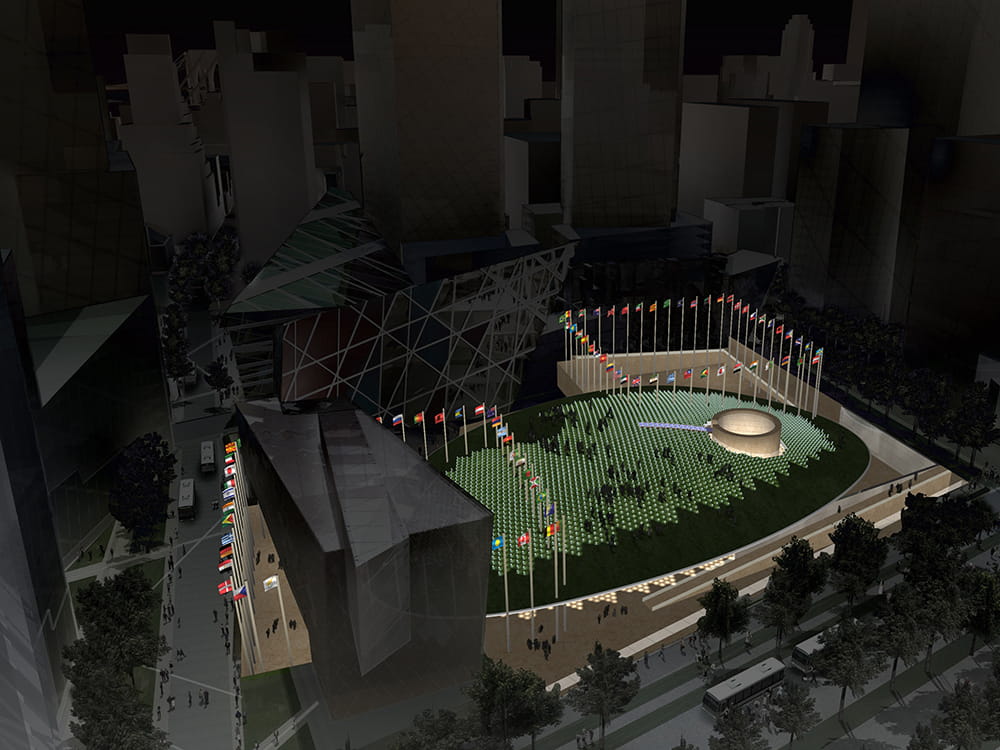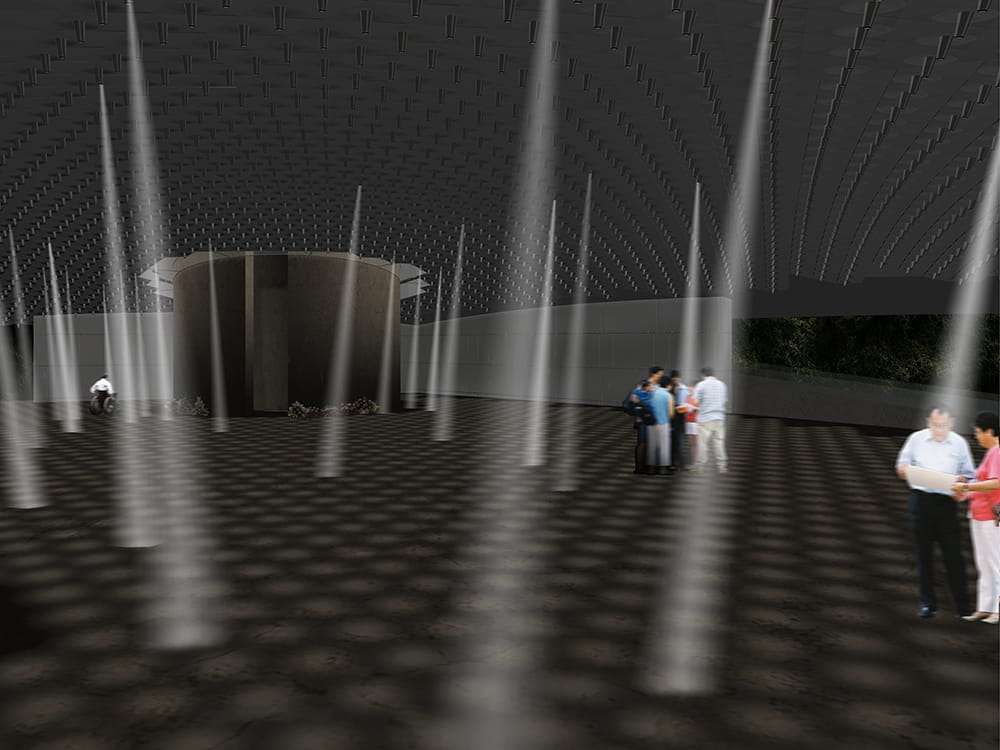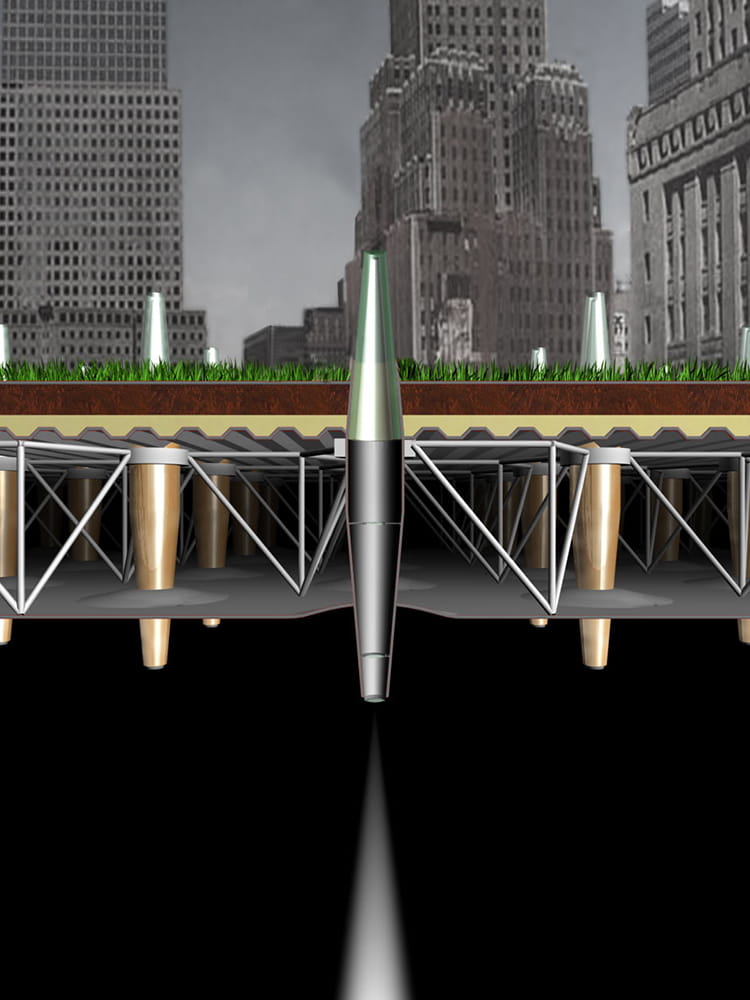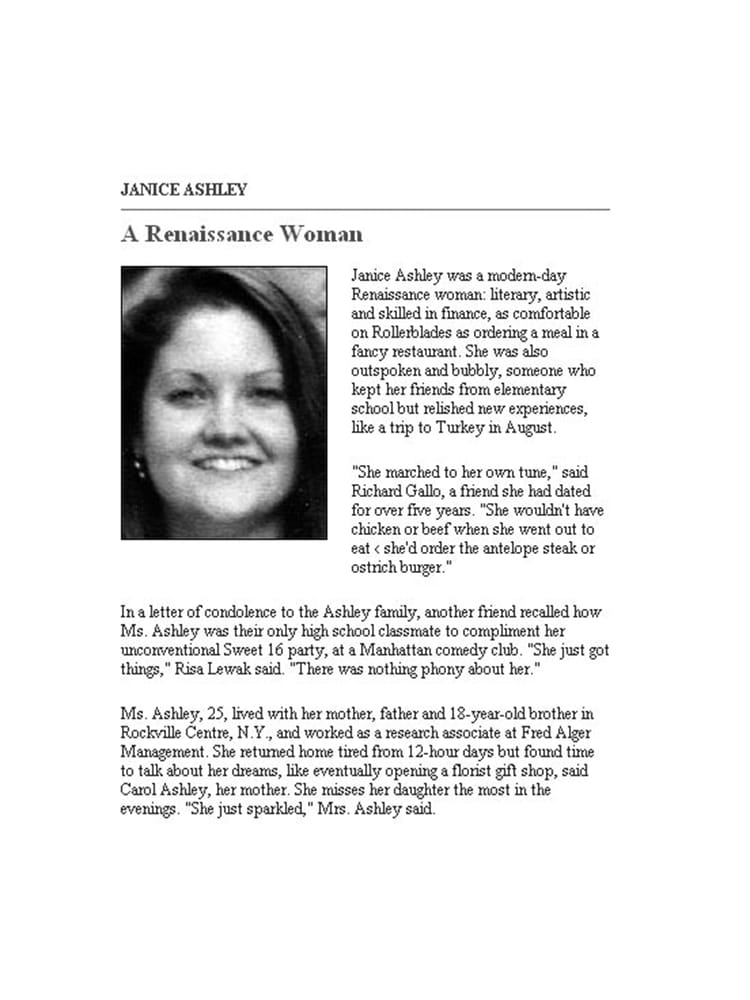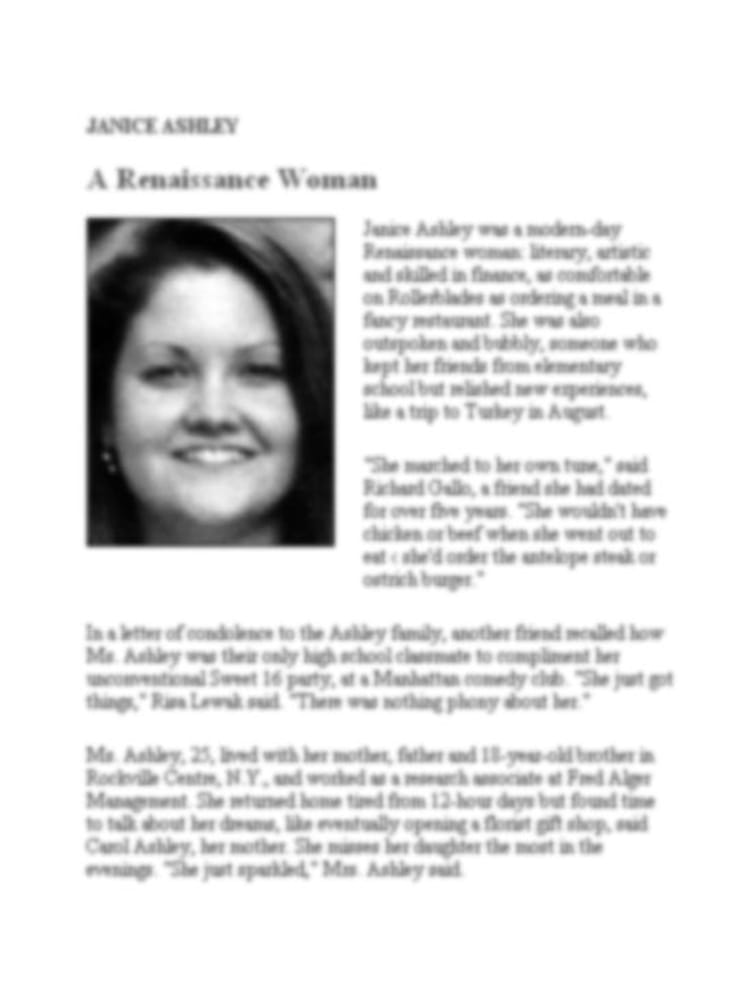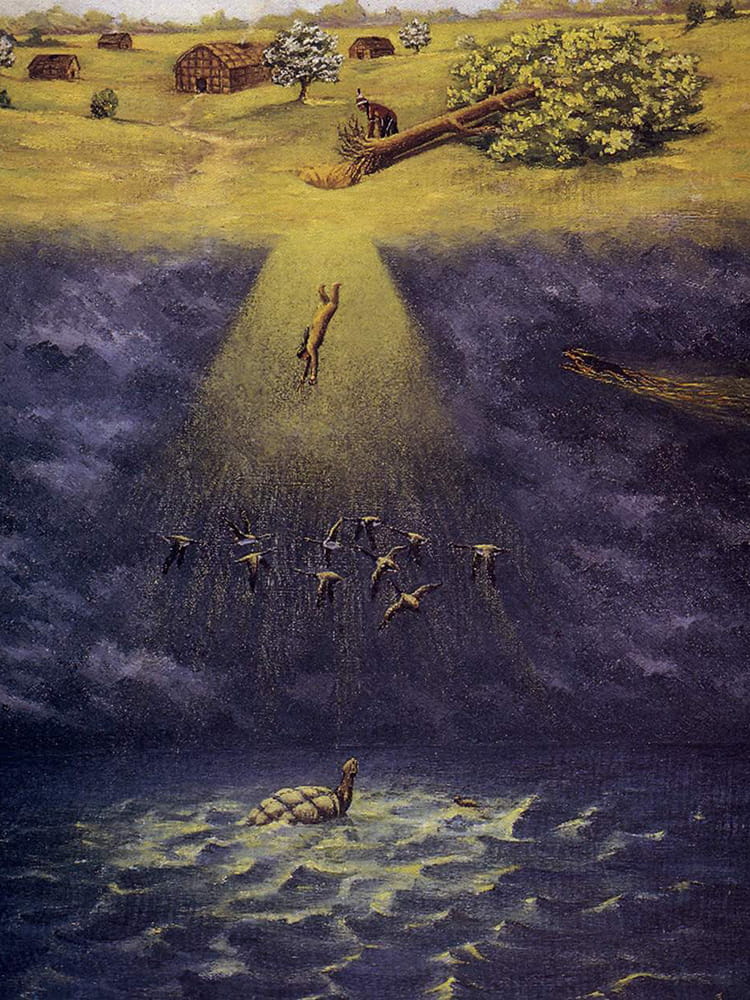Beacon Field – WTC Memorial
2003
In his memorial foundation statement, architect Daniel Libeskind identified within the tragedy and imminent rebirth of the World Trade Center site the challenge of a “seemingly impossible dichotomy”: “to acknowledge the terrible deaths which occurred on this site while looking to the future with hope”.
This proposal addresses this challenge by creating spaces that sanctify and give form to these dual aspirations. The design comprises five primary elements: the Shell, the Light Beacons, the Memorial Chamber, the Tower Colonnades, and the Liberty Wall. Descriptions of each element are as follows:
The Shell: The spaces of the memorial are defined by a thin shell structure separating a park space above from the memorial space below. Creating a gently sloping park above and a subtly vaulted dome below, this element divides the solemn space located 30 feet below grade from the activities of the park and streets above. While remembering the mound of 1.8 million tons of debris that was carefully removed from the site, the form is also evocative of a turtle’s shell. A symbol of strength, stability, benevolence, and wisdom in many of the world’s most ancient myths and legends, the turtle was a sacred creature upon whom, according to the original Native American inhabitants of Manhattan Island, the world was born.
The Light Beacons: For visitors of the memorial, the focus of their experience will be the light beacons. Each an optical element, the beacons span the depth of the shell, serving different functions above and below. At the park level, the beacons symbolize hope. During the day, each beacon collects sunlight, projecting it to the memorial space below. Eternal flames, standing as watchful guardians within a field of hope, they will glow at night with illumination.
In the memorial space below, a quiet, solemn area for visitation and contemplation, the beacons perform a magical function: each beacon projects information about one of the 3,022 victims to a focal plane located 3 feet above the floor. Creating a space awash with words, the beacons will cast an ephemeral light of memory on all who pass through the space. Visitors will receive cards to permit viewing of the illuminated texts, souvenirs of their experience as well as invoking a memory of the sea of paper that flooded lower Manhattan following the attacks.
The Memorial Chamber: This space fulfills two of the functions identified in the program – a space for families and loved ones of the victims and the final resting place of the unidentified remains of victims. Circular in plan, this space is configured to house the victims’ remains within a thickened wall surrounding an inner space set aside for families and loved ones. A fountain element, surrounded by benches, will be located at the center of this quiet, fully enclosed space. A skylight will provide daylight, washing the inner walls with illumination. At the chamber’s perimeter, visitors would be encouraged to leave flowers and mementos, creating a splash of color within the memorial space.
The Tower Colonnades: Serving as supports for the shell above, 92 posts outline the original footprints of the World Trade Center towers. At the park level, these posts function like flagpoles crowned by the flags of the countries of the victims.
The Liberty Wall: Taking on an L-shape in plan, the Liberty Wall extends parallel to the Liberty Street ramp, providing a point of support for the shell structure. Symbolically, this wall will have a mirrored finish reflecting the faces of the people who visit the site. The gifts of peace and freedom must be upheld, and the end to hatred, ignorance, and intolerance must begin with each and every person. The simple message of this element is that within each individual is the capacity for endurance, courage, and compassion displayed by countless individuals following the attacks.
This project is a collaboration between Yeh Design Lab and Lookinglass Architecture & Design, who also provided this text. The proposal was one of the 5,201 entries from 63 nations and 49 U.S. states submitted to the World Trade Center Site Memorial Competition.
Project Team:
Emil Mertzel
Nick Gillock
Yi-Hsiu Yeh


